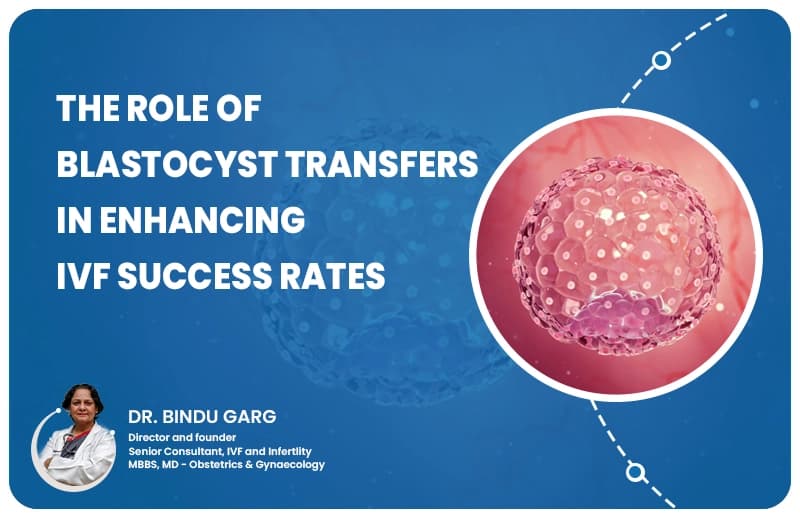
The Role of Blastocyst Transfers in Enhancing IVF Success Rates
When it comes to in-vitro fertilization (IVF), every step matters in the journey to becoming a parent. One of the most important decisions during the IVF process is choosing the right stage for embryo transfer.
One such option that has transformed fertility treatments is blastocyst transfer. This advanced technique increases the chances of implantation and pregnancy by transferring embryos at a more developed stage. But how does it work, and why is it so effective?
In this blog, we will discuss the science behind blastocyst transfer, its role in increasing IVF success rates, and why it is growing in popularity among fertility specialists.
Whether you are exploring IVF options or just curious about modern reproductive technologies, this article will provide valuable information in a clear, easy-to-understand manner.
Understanding Blastocyst Transfer
What Is a Blastocyst?
The blastocyst is an embryo that develops about five to six days after fertilization. At this stage, it has a hollow structure that consists of two main components:
- Inner Cell Mass (ICM): This leads to the development of the foetus.
- Trophoblast Layer: This leads to the formation of the placenta and other supporting tissues.
How Is Blastocyst Transfer Different From Day-3 Transfers?
Traditionally, embryos are transferred on the third day of their development. However, embryos on the third day are less developed, with fewer cells in them. The blastocyst stage, which occurs on the fifth or sixth day, allows for:
- Better Embryo Selection: Only the strongest embryos survive to this stage.
- Improved Synchronization: The lining of the uterus is naturally more receptive to the blastocyst.
- Higher Implantation Rates: Advanced growth increases the chances of transplantation.
Advantages of Blastocyst Transfer
- Increased Pregnancy Rates: Studies show that transferring blastocysts significantly improves pregnancy rates compared with transferring early-stage embryos.
- Lower Risk of Multiple Pregnancies: With blastocyst transfer, fertility specialists can transfer fewer embryos without compromising success, reducing the chance of multiple pregnancies.
- Natural Selection Process: Allowing the embryos to develop to the blastocyst stage helps select the healthiest embryo, increasing the chances of a successful pregnancy.
- Enhanced Genetic Testing: At the blastocyst stage, preimplantation genetic testing (PGT) can be performed more effectively, allowing potential chromosomal abnormalities to be identified.
The Science Behind Blastocyst Transfer Success
Why Do Blastocysts Implant Better?
- Advanced Development: The blastocysts are more mature and able to attach to the lining of the uterus.
- Optimized Timing: This transfer more closely aligns with natural implant timing.
- Stronger Embryos: Survival to the blastocyst stage demonstrates high developmental potential in the embryo.
When Is Blastocyst Transfer Recommended?
- Recurrent IVF Failures: For couples who have had unsuccessful IVF attempts, blastocyst transfer offers better outcomes.
- Good Embryo Quality: If many high-quality embryos are available, culturing them to the blastocyst stage increases selection.
- Elective Single Embryo Transfer (eSET): For patients aiming to avoid multiple pregnancies, a single, high-quality blastocyst can be transferred.
Challenges and Risks of Blastocyst Transfer
- Embryo Survival: Not all embryos survive to the blastocyst stage, reducing the number of embryos available for transfer or freezing.
- Requires Advanced Lab Facilities: Developing embryos to the blastocyst stage requires state-of-the-art laboratories and experienced embryologists.
- May Not Be Suitable for Everyone: Patients with a limited number of embryos may not benefit from this approach.
Step-by-Step Process of Blastocyst Transfer
- Embryo Cultivation: The fertilized eggs are cultured in the laboratory for five to six days to reach the blastocyst stage.
- Embryo Selection: The healthiest blastocysts are selected based on morphology and development.
- Transfer Procedure: The selected blastocyst is transferred to the uterus using a thin catheter.
- Post-Transfer Care: Patients are advised to rest and avoid strenuous activities. A pregnancy test is done two weeks later.
Success Rates of Blastocyst Transfer
Recent studies suggest that the success rate of blastocyst transfer ranges from 50% to 70%, depending on the following factors:
- Age of the patient
- Quality of embryos
- Expertise in the fertility centre
Conclusion
Blastocyst transfer has revolutionized the field of IVF, as it has offered higher success rates and better outcomes for couples seeking to become parents. By combining the embryo transfer step with the natural implantation process, this technique has brought hope to countless couples. However, it is essential to consult an experienced fertility specialist to determine if blastocyst transfer is the right option for you.
With the help of Dr. Bindu Garg, you will get expert guidance, cutting-edge technology, and specialist care to help you in your journey to parenthood.
Content Created By:

CyberBizz Technologies
Team - Content Curator